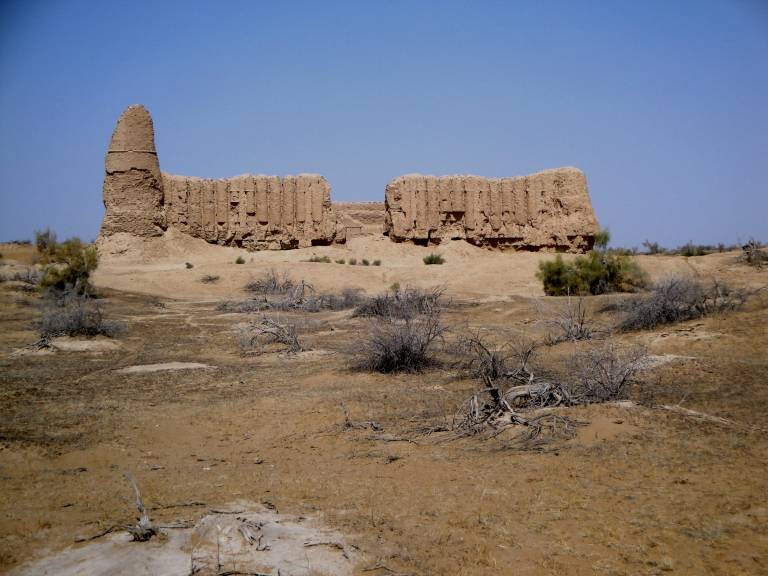Tumsukly Minara caravansary, Turkmenistan

Tumsukly Minara lies in the Karakum Desert, in modern-day Turkmenistan, some 90 km north of the fertile delta that was home to Merv, one of the great cities of the Silk Roads in Central Asia. This caravansary, a medieval way-station for desert travellers, linked the delta with the trade routes along the fabled Oxus River (modern-day Amu Darya). The corrugated earth walls, a distinctive feature of buildings in the region, and a tall minaret, are exceptionally well preserved, surviving for nearly a thousand years.

The caravansary in 2018, with distinctive corrugated walls, central entrance (largely collapsed) and minaret (left). (© Annamyrat Orazov)
However, its remote location means that it has never been fully documented – this is the first published photograph of the monument after one of our Turkmen colleagues, Annamyrat Orazov, recently visited the area as part of the project. Our project will enable recording and legal protection. How many more sites exist in the desert? Elsewhere, we know caravanserai are often found at fairly regular intervals (a day’s journey with your camels): can we find the rest of this route across the desert, a journey of nearly 200 kilometres? Advances in satellite imagery can help us detect such sites, which can then be targeted for exploration in the field. One of the aims of the UCL team will be to help local specialists across Central Asia to develop the use of satellite information, and to be able to undertake effective and rapid field documentation. Changing climatic conditions, even in this remote part of the desert, mean that the speed of decay of this spectacular monument may change. Our Turkmen colleagues need strong baseline information, to monitor how the monument is changing and to plan for its conservation when the need arises.
 Close
Close


